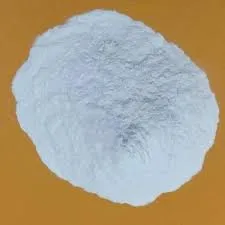
Nov . 15, 2024 21:36 Back to list
methylhydroxyethyl cellulose
Methyl Hydroxyethyl Cellulose A Versatile Polymer in Modern Applications
Methyl hydroxyethyl cellulose (MHEC) is a non-ionic cellulose ether that has gained widespread recognition in various industrial and consumer applications due to its unique properties. As a derivative of cellulose, MHEC retains the natural characteristics of this ubiquitous polymer, while its modifications enhance its performance in different environments. This article seeks to explore the composition, properties, and applications of Methyl Hydroxyethyl Cellulose, illustrating its vital role in modern technology and industry.
Composition and Properties
MHEC is synthesized through the etherification of cellulose, a biopolymer obtained from the cell walls of plants. The methyl and hydroxyethyl groups are introduced into the cellulose structure, enhancing its solubility in cold water and increasing its viscosity. The degree of substitution (DS)—the average number of substituent groups on the cellulose backbone—affects the solubility and viscosity of MHEC. Generally, a higher DS leads to increased viscosity and improved thickening properties.
One of the remarkable features of MHEC is its ability to form gels and films upon the application of heat or as a response to pH changes. This behavior is advantageous in various applications, allowing MHEC to serve as an effective thickener, stabilizer, and film-forming agent. Moreover, its non-ionic nature makes it compatible with a wide range of substances, enhancing its utility across diverse sectors.
Applications
The versatility of MHEC has led to its adoption in numerous industries, including construction, pharmaceuticals, food, and cosmetics.
methylhydroxyethyl cellulose

1. Construction Industry MHEC is extensively used in the production of cement and plaster. It improves the workability of mortars and enhances their adhesion properties, making it easier to apply and manipulate. The polymer's water-retaining capabilities prevent rapid drying, allowing for extended open time and improved mechanical strength in cured products. As such, MHEC has become a crucial component in the formulation of tile adhesives, plastering compounds, and self-leveling floor systems.
2. Pharmaceuticals In the pharmaceutical sector, MHEC functions as a thickening agent and stabilizer in various formulations, including suspensions and emulsions. Its ability to control the release of active pharmaceutical ingredients (APIs) makes it valuable in drug delivery systems. MHEC can also serve as a binding agent in tablet formulations, enhancing the integrity and stability of the final product.
3. Food Industry MHEC is recognized as a food additive, classified as a thickener and stabilizer under several regulatory standards. It improves the texture and mouthfeel of various foods, such as sauces, dressings, and dairy products. Its gelling properties make it suitable for creating low-calorie products, providing the desired consistency without adding significant calories.
4. Cosmetics and Personal Care In the cosmetics industry, MHEC is incorporated into formulations such as creams, lotions, and gels. It enhances the viscosity and stability of products, ensuring a uniform texture and improved application. Additionally, MHEC helps to retain moisture, making it an essential ingredient in moisturizing products.
Conclusion
Methyl hydroxyethyl cellulose stands out as a multifunctional polymer with significant applications across a variety of industries. Its unique properties, including its ability to thicken, stabilize, and form films, make it an invaluable ingredient in construction, pharmaceuticals, food, and cosmetics. As industries continue to innovate and seek sustainable solutions, MHEC’s biobased origins and versatility are likely to keep it at the forefront of material science for years to come. With ongoing research into its potential new applications, the future looks promising for Methyl hydroxyethyl cellulose in enhancing product performance and sustainability.
-
Versatile Hpmc Uses in Different Industries
NewsJun.19,2025
-
Redispersible Powder's Role in Enhancing Durability of Construction Products
NewsJun.19,2025
-
Hydroxyethyl Cellulose Applications Driving Green Industrial Processes
NewsJun.19,2025
-
Exploring Different Redispersible Polymer Powder
NewsJun.19,2025
-
Choosing the Right Mortar Bonding Agent
NewsJun.19,2025
-
Applications and Significance of China Hpmc in Modern Industries
NewsJun.19,2025







